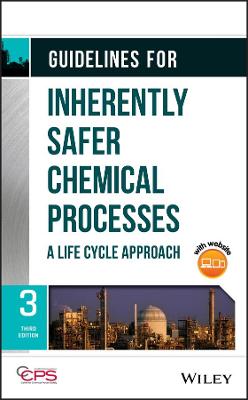Since the publication of the second edition several United States jurisdictions have mandated consideration of inherently safer design for certain facilities. Notable examples are the inherently safer technology (IST) review requirement in the New Jersey Toxic Chemical Prevention Act (TCPA), and the Inherently Safer Systems Analysis (ISSA) required by the Contra Costa County (California) Industrial Safety Ordinance. More recently, similar requirements have been proposed at the U.S. Federal level in the pending EPA Risk Management Plan (RMP) revisions. Since the concept of inherently safer design applies globally, with its origins in the United Kingdom, the book will apply globally.
The new edition builds on the same philosophy as the first two editions, but further clarifies the concept with recent research, practitioner observations, added examples and industry methods, and discussions of security and regulatory issues. Inherently Safer Chemical Processes presents a holistic approach to making the development, manufacture, and use of chemicals safer. The main goal of this book is to help guide the future state of chemical process evolution by illustrating and emphasizing the merits of integrating inherently safer design process-related research, development, and design into a comprehensive process that balances safety, capital, and environmental concerns throughout the life cycle of the process.
It discusses strategies of how to: substitute more benign chemicals at the development stage, minimize risk in the transportation of chemicals, use safer processing methods at the manufacturing stage, and decommission a manufacturing plant so that what is left behind does not endanger the public or environment.
- ISBN10 1119529166
- ISBN13 9781119529163
- Publish Date 12 December 2019 (first published 11 October 2019)
- Publish Status Active
- Publish Country US
- Publisher John Wiley & Sons Inc
- Imprint Wiley-AIChE
- Edition 3rd Edition
- Format Hardcover
- Pages 528
- Language English
